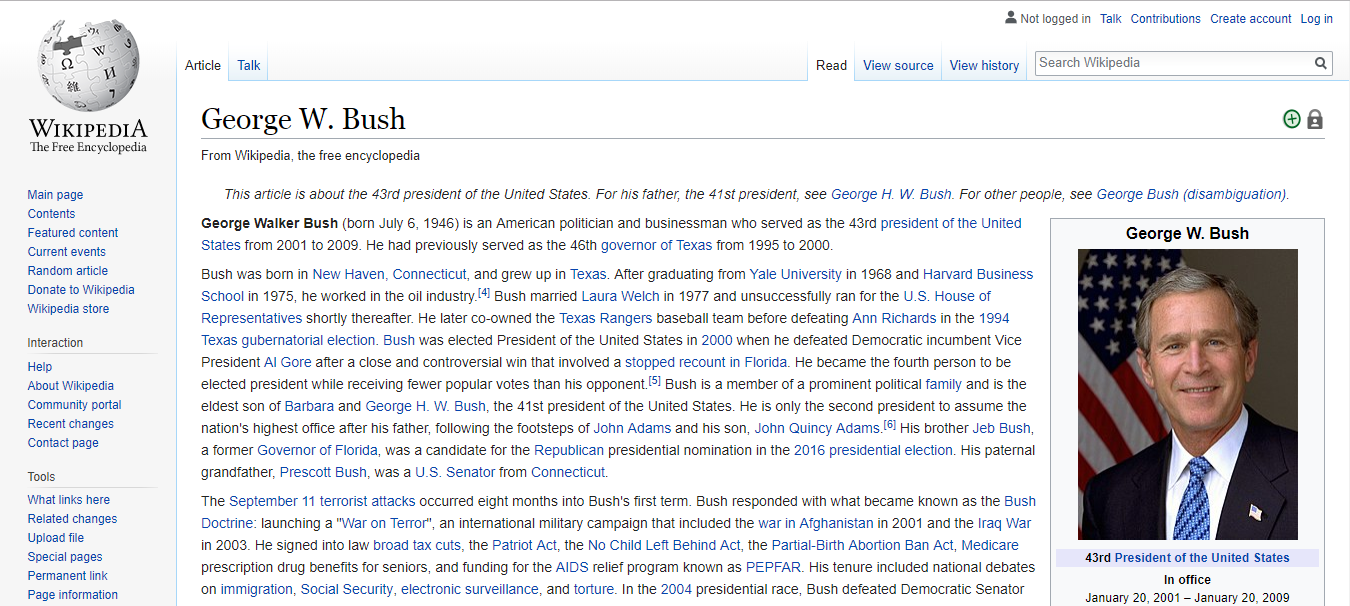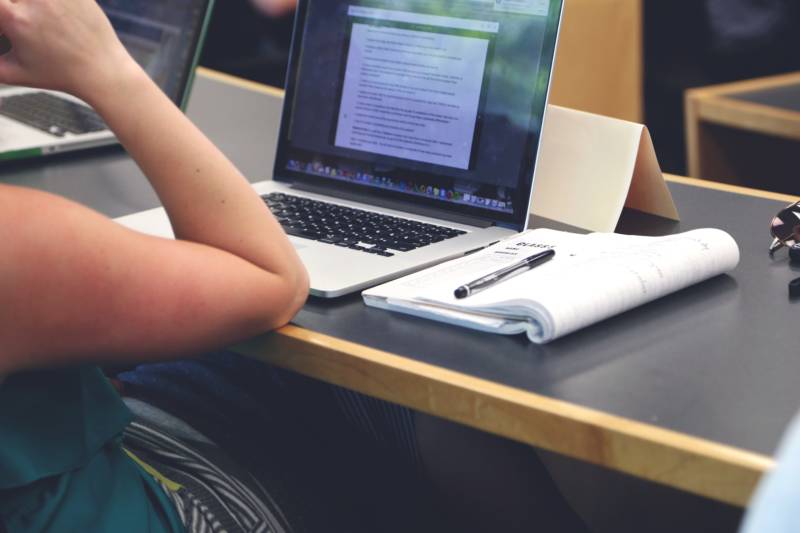For a long time we had the same problem in traditional literacy: Skilled readers use a set of strategies that they don’t always recognize and can’t explain. The movement to teach meta-cognition has changed the way we teach reading. Why not apply the same teaching strategies when it comes to Wikipedia? Yes, Wikipedia can be complicated, political and messy. It can also be accurate—according to one study that compared 100 pharmacological Wikipedia entries to traditional textbooks, the “accuracy of drug information on Wikipedia was 99.7%±0.2% when compared to the textbook data.” While the information wasn’t totally complete, it was very accurate.
My ambivalence toward Wikipedia was changed by a lesson designed by the Stanford History Education Group (SHEG) that is part of their Civic Online Reasoning curriculum. In the lesson, students are asked to examine several parts of the Wikipedia entry on George W. Bush.
George W. Bush is a public person whose article is “semi-protected” (see the lock icon in the top right of the screenshot below). This icon means that there is a process for editing the article that has a higher threshold than an unprotected article. It is also rated “a good article” as shown by the green plus sign. Students are also asked to evaluate the number of links and citations in the article, and to follow the citations to the bottom and judge the sources used in the article.

When I taught this lesson, I used a projector to show the different features of the entry to my whole class, then students worked in pairs to evaluate and discuss the entry. I found that it was a great place to start a discussion of credible online sources. My middle school classes were adamant that they shouldn’t use Wikipedia, and I was surprised at the level of resistance. We use GoGuardian at our site to monitor our Chromebooks, so I know students are frequently on Wikipedia–they just change windows when a teacher walks by. Once they felt confident that they could talk openly about Wikipedia, I hoped they would evaluate its articles and bring them into class conversations rather than avoid them altogether.
The lesson took on a life of its own after that. A student found the Wikipedia entry for our town and managed to edit the article, providing a perfect example of a user editing the content. That also led to discussion of what wikis are in general.
The class was excited at their newfound powers, but then they noticed that the edits they were making were being removed. A horrified silence followed—somebody was monitoring them! A Wikipedia moderator was taking down edits because there was too much activity on a single article. I then showed them that they can find that specific moderator and examine their credentials. The editor we were dealing with had extensive experience as a moderator, had earned many digital badges for editing and moderating, and had been active on Wikipedia for years. We also explored the revision history of the article and they were surprised that the edits they made were time stamped and showed their username.

This lesson has broken my silence about Wikipedia in the classroom. Critically evaluating Wikipedia articles and the way the site works is a perfect gateway into discussing internet research. There isn’t a single online source that doesn’t need to be cross-referenced, interrogated and vetted—and Wikipedia is no different. I realized that were levels of online literacy involved in wikis that I hadn’t recognized before, and that we should discuss them in the classroom. In the future, I will be including lessons on moderators, edit histories and a general overview of “wiki” type websites.
Since we all use Wikipedia, let’s help students (and ourselves) better understand how it works, and how to know if what we read there is credible. I encourage you to fire up that projector and spend time actively evaluating Wikipedia with your classes.
Editor’s Note:
If you want to learn more about evaluating online information in your classroom, take our free, online course Finding & Evaluating Information on KQED Teach, or explore our upcoming course series on misinformation.


